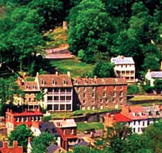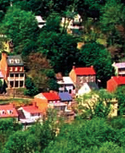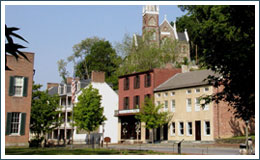|

Harpers Ferry The upper town is perched on a cliff above the Potomac River and is an Historic District; the lower town along the Shenandoah River is a National Historical Park of the same name. The real-life, 21st century town comes complete with a steep cobblestone street of quaint shops and more than 125 historic houses restored and inhabited by their owners on long narrow side streets. Always a workingman’s town, Harpers Ferry has few elegant mansions. The historic homes built in the 1830s and 40s were mostly for Federal Armory workers and were created by blasting the cliffs.
|
 |
||||||||||||||
Copyright © 2010, Washington Heritage Trail, Inc. Funded in part by the Federal Highway Administration.










